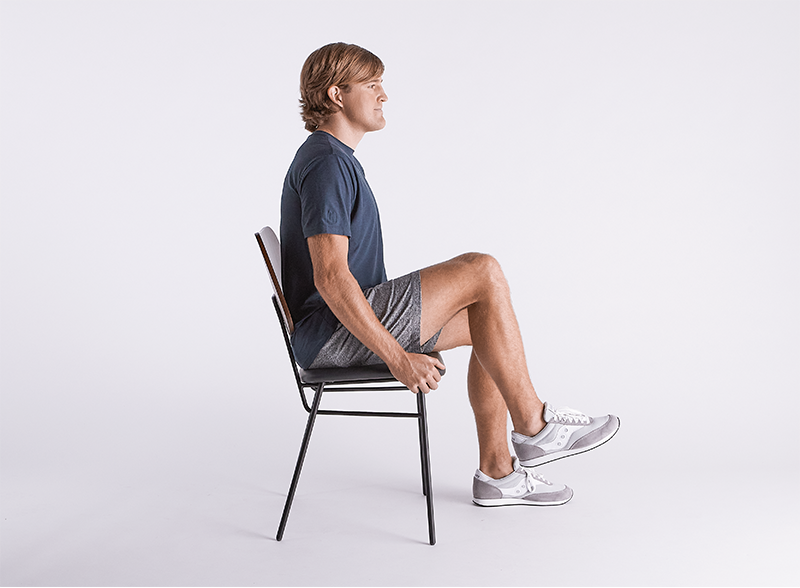The modern workplace has created an unprecedented health challenge: prolonged sitting has become the norm, earning the alarming nickname “the new smoking” due to its association with numerous health risks. With the average adult spending six to eight hours sitting each day, the consequences extend far beyond simple discomfort. Extended periods of inactivity contribute to cardiovascular disease, diabetes, poor posture, muscle weakness, and decreased mental clarity.
However, the solution doesn’t require a complete career overhaul or expensive gym memberships. The key lies in integrating simple, effective desk exercises into your daily routine—movements so subtle they won’t disrupt your workflow or draw unwanted attention from colleagues. These “desk exercises” represent a revolutionary approach to workplace wellness, offering a practical way to counteract the negative effects of prolonged sitting while actually enhancing productivity and focus.
Research demonstrates that short workplace workouts can increase productivity by 22% and creativity by 17%, making movement breaks not just beneficial for health but essential for professional success. The beauty of desk exercises lies in their accessibility—no special equipment, no wardrobe changes, and no need to leave your workspace.
By incorporating targeted movements that address the specific muscle groups affected by prolonged sitting, you can transform your desk from a health hazard into a wellness station. This comprehensive guide will equip you with practical, evidence-based exercises that seamlessly integrate into your workday, helping you build a more active, healthier professional life.
Understanding the Sedentary Lifestyle Challenge

The human body wasn’t designed for prolonged sitting, yet modern work demands have created a culture where remaining stationary for eight or more hours daily has become standard. This sedentary lifestyle triggers a cascade of physiological changes that extend far beyond simple muscle stiffness. When we sit for extended periods, our metabolism slows, blood circulation decreases, and postural muscles weaken, creating a perfect storm for various health complications.
The most immediate effects include muscle tension in the neck, shoulders, and back, along with reduced circulation in the legs and feet. Over time, these seemingly minor discomforts evolve into more serious conditions, including repetitive strain injuries, chronic lower back pain, and increased risk of cardiovascular disease. The psychological impact is equally significant, with prolonged sitting contributing to decreased energy levels, reduced focus, and increased stress.
Even regular exercise outside of work hours cannot fully counteract the negative effects of prolonged sitting. This reality has shifted the focus from simply exercising more to moving more frequently throughout the day. The concept of “active sitting” and regular movement breaks has emerged as a crucial component of workplace wellness, emphasizing the importance of interrupting sedentary periods with purposeful movement.
The Science Behind Microbreaks and Movement
The most effective strategy for combating sedentary behavior involves incorporating regular “microbreaks”—brief periods of movement lasting just two to five minutes every 30 minutes. These short interruptions in sitting time have profound physiological benefits, improving blood circulation, preventing muscle stiffness, and maintaining metabolic activity throughout the day.
Research shows that these brief movement periods not only benefit physical health but also enhance cognitive function. When you return to work after a microbreak, mental clarity improves, focus sharpens, and productivity increases. This creates a positive cycle where health-promoting behaviors directly support professional performance, making the case for desk exercises even more compelling.
The key to successful microbreak implementation lies in consistency rather than intensity. Small, regular movements prove more beneficial than sporadic, intense exercise sessions. This approach aligns perfectly with the demands of modern work environments, where lengthy breaks aren’t always feasible, but brief moments of movement can be seamlessly integrated into the workday.
Upper Body Desk Exercises

Desk Push-Ups for Strength Building
Desk push-ups represent one of the most effective upper-body exercises you can perform in your workspace. Stand approximately arm’s length from your desk, place your hands shoulder-width apart on the desk edge, and lower your chest toward the surface before pushing back up. This modified push-up variation targets the chest, shoulders, and triceps while being gentle enough for regular workplace use. Perform 10-15 repetitions to build upper body strength and counteract the forward head posture common in desk workers.
Shoulder Blade Squeezes for Posture
Combat the rounded shoulder posture that develops from prolonged computer use with shoulder blade squeezes. Pull your shoulder blades together gently, hold for 5-10 seconds, then release. This simple movement helps strengthen the muscles between your shoulder blades while stretching the chest muscles that become tight from hunching forward. Perform this exercise several times throughout the day to maintain proper posture and reduce upper back tension.
Neck Stretches for Tension Relief
Address the neck strain that comes from looking at screens by incorporating gentle neck stretches. Slowly tilt your head from side to side and front to back, holding each position for 15-20 seconds. These movements help prevent the headaches and neck pain commonly associated with prolonged computer use. The key is gentle, controlled movement—never force the stretch or move too quickly.
Lower Body Activation Exercises
Chair Squats for Leg Strength
Chair squats provide an excellent way to engage your leg muscles without leaving your workspace. Simply raise yourself up from your seated position and lower back down without fully sitting, repeating this movement 10-15 times. This exercise targets the quadriceps, glutes, and core muscles while improving circulation in the lower body. For added challenge, hold the lowered position for a few seconds before returning to the starting position.
Seated Leg Raises for Core Engagement
While seated, lift and extend one leg at a time, holding for a few seconds before lowering. This exercise engages both the leg muscles and core, helping to maintain muscle tone and improve circulation. Perform 10-15 repetitions on each leg, focusing on controlled movement rather than speed. This exercise is particularly beneficial for maintaining hip flexor flexibility, which becomes compromised with prolonged sitting.
Calf Raises for Circulation
Standing calf raises help combat the circulation issues that develop from prolonged sitting. Stand behind your chair for balance, raise your heels off the floor, and slowly lower back down. This simple movement activates the calf muscles, which act as a “second heart” by pumping blood back up from the legs. Perform 15-20 repetitions whenever you feel your legs becoming stiff or heavy.
Core and Flexibility Movements

Seated Marching for Core Activation
Sit at the edge of your chair and alternate lifting your knees as if marching in place. This exercise engages the core muscles while improving circulation and providing a gentle cardiovascular boost. The movement is subtle enough to perform during phone calls or while reading, making it an ideal multitasking exercise.
Wrist and Ankle Circles for Joint Health
Don’t neglect the smaller joints that bear the brunt of repetitive workplace activities. Perform gentle wrist rotations to prevent carpal tunnel syndrome, especially important for frequent typists. Similarly, ankle circles improve foot and ankle flexibility while boosting blood flow to the feet. These simple movements take less than a minute but provide significant benefits for joint health and circulation.
Spinal Twists for Back Health
While seated, place one hand on the opposite knee and gently rotate your torso, looking over your shoulder. Hold for 15-20 seconds before switching sides. This movement helps maintain spinal mobility and can alleviate the lower back stiffness that develops from prolonged sitting.

